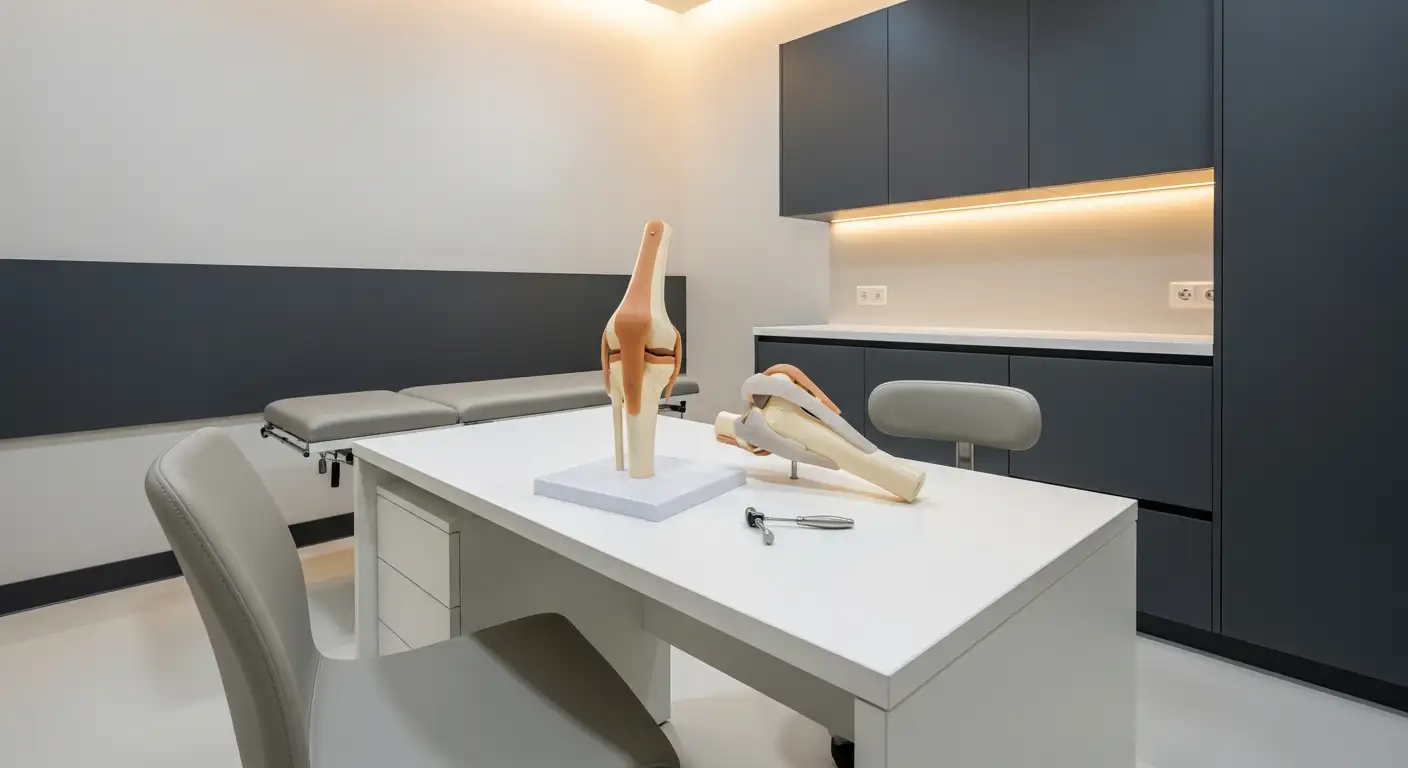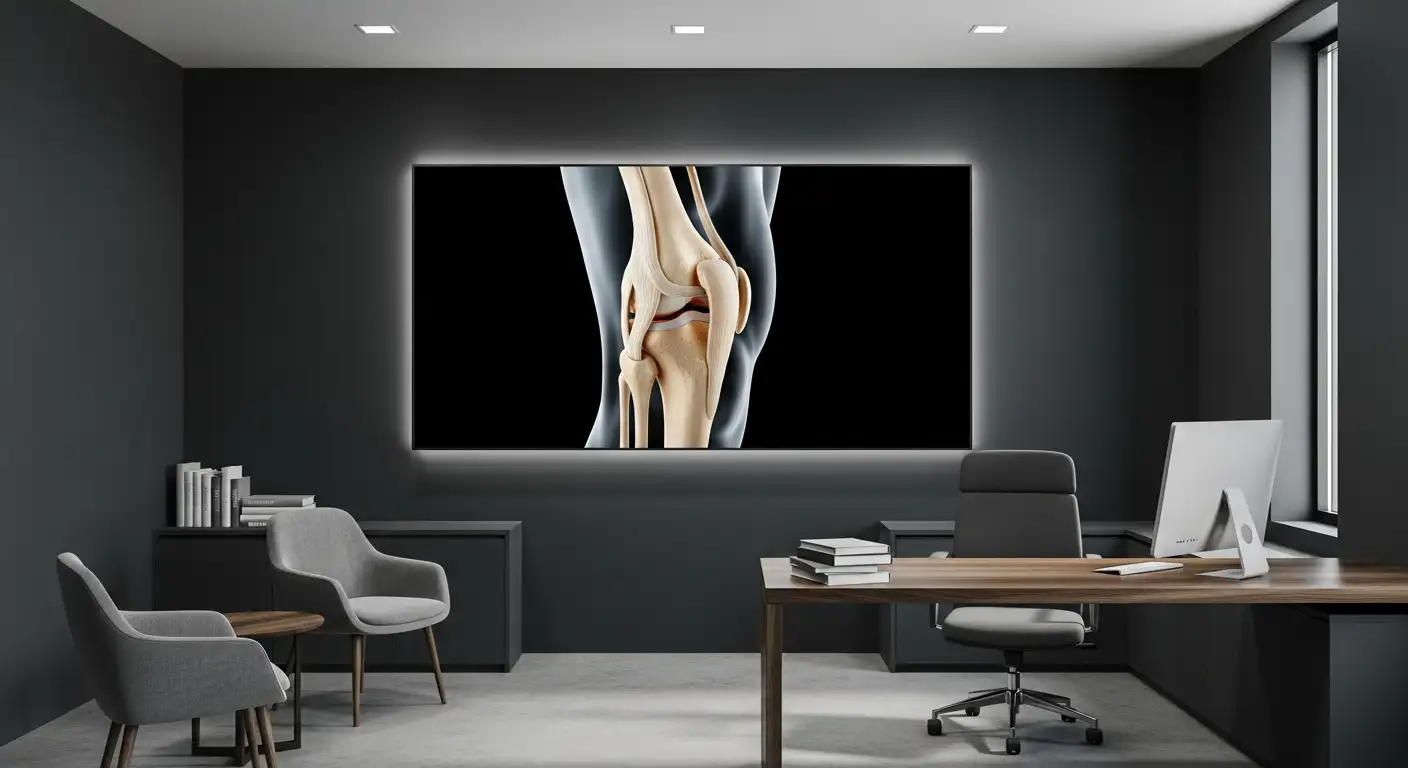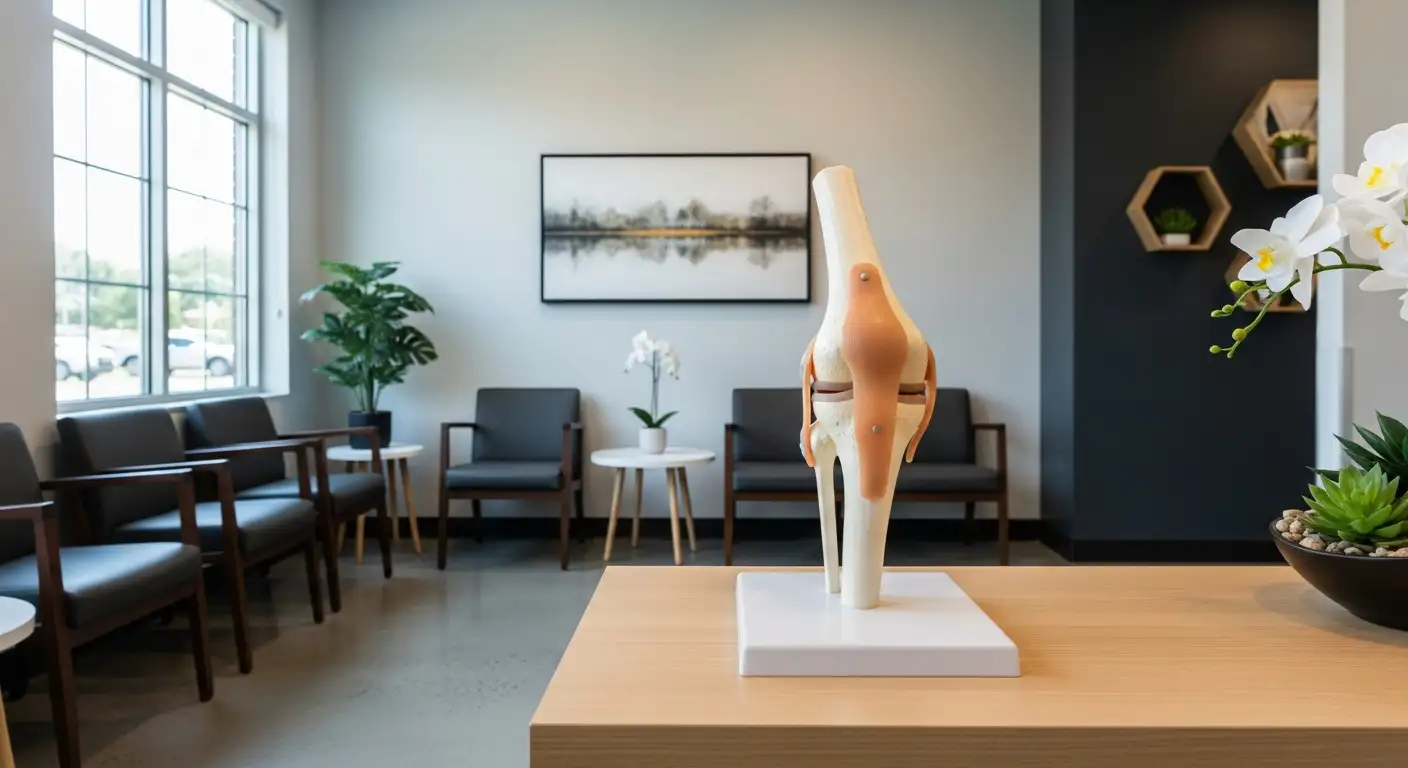Understanding Knee Pain
Experiencing a sharp pain on the outside of the knee when kneeling can be a perplexing and distressing occurrence. To comprehend the possible reasons behind this discomfort, it is essential to first understand the anatomy of the knee and the common causes of knee pain.
Anatomy of the Knee
The knee is a complex joint that plays a crucial role in movement, particularly in activities like walking, running, and kneeling. It is composed of various components, including bones, cartilage, ligaments, and tendons. The kneecap (patella) is located at the front of the knee, while the outside part of the knee includes the lateral collateral ligament (LCL) and the iliotibial (IT) band. These structures work together to allow the knee to bend and straighten smoothly, providing stability and strength to the lower body.

Common Causes of Knee Pain
There are several possible causes for experiencing a sharp pain on the outside of the knee when kneeling. One common condition is iliotibial band syndrome, a common issue in runners characterized by swelling and tenderness on the outside of the knee. This syndrome can result from overuse, especially due to repetitive bending of the knee during running [1].
Other potential causes of outer knee pain include bursitis, meniscus tears, and lateral collateral ligament (LCL) injuries. Although these conditions may present with similar symptoms, they each require different treatments. Treatments for sharp pain on the outside of the knee when kneeling can range from rest and ice to physical therapy, corticosteroid injections, and in some severe cases, surgery.
It's crucial to seek medical evaluation for a proper diagnosis and treatment plan if experiencing sharp pain on the outside of the knee when kneeling. This is important to prevent chronic issues or worsening of the condition [1].
Understanding the anatomy of the knee and the common causes of knee pain can help individuals recognize when sharp pain on the outside of the knee when kneeling may be indicative of a more serious issue, prompting them to seek medical attention.
Iliotibial Band Syndrome
One of the common causes of sharp pain on the outside of the knee when kneeling is Iliotibial Band Syndrome (ITBS). This condition is prevalent amongst runners and involves the irritation and inflammation of the iliotibial band, a thick band of fibrous tissue that runs down the outside of the leg.
Symptoms and Diagnosis
Individuals with ITBS often experience a sharp, shooting pain on the outside of the knee, especially when kneeling. Other symptoms include swelling and tenderness in the same area. This pain is often exacerbated by overuse, particularly repetitive bending of the knee during activities like running.
To diagnose ITBS, medical professionals may conduct a physical examination and ask about the patient's medical history and symptoms. Imaging tests such as an MRI or ultrasound may also be utilized to rule out other conditions with similar symptoms, like bursitis, meniscus tears, and lateral collateral ligament (LCL) injuries.
Treatment and Prevention
Treatment for ITBS often involves a combination of rest, physical therapy, and pain management. Rest and avoiding activities that exacerbate the pain are crucial in the initial stages of treatment. Physical therapy may include exercises designed to stretch and strengthen the iliotibial band, thereby alleviating pain and inflammation.
Pain management may involve over-the-counter pain relievers, topical analgesics, or corticosteroid injections for severe cases. In rare instances where conservative treatments do not provide relief, surgical intervention may be considered.
Preventing ITBS involves maintaining flexibility and strength in the iliotibial band. This can be achieved through regular stretching and strengthening exercises, particularly for runners or those regularly participating in knee-bending activities. Additionally, using proper form and technique during physical activity, as well as wearing appropriate footwear, can also help prevent ITBS.
It's important to seek medical evaluation if you're experiencing sharp pain on the outside of the knee when kneeling. A proper diagnosis and treatment plan can prevent chronic issues or worsening of the condition.
Patellofemoral Pain Syndrome
Patellofemoral pain syndrome (PFPS) is a common condition that may cause sharp pain on the outside of the knee when kneeling. Understanding the symptoms and exploring treatment options can help manage this condition effectively.
Identifying the Symptoms
PFPS is characterized by pain at the front of the knee, particularly during activities that exert pressure on the knee joint. These activities may include squatting, climbing or descending stairs, and after prolonged periods of sitting. This condition affects a significant portion of the population, with varying prevalence rates among different groups. For instance, professional cyclists show a 35.7% prevalence rate, while it's seen in 34.9% of workers at a large Iranian manufacturing company, 13.5% in the military, and 30% in drivers of selective waste collection [2].
A key factor contributing to or exacerbating PFPS symptoms is the tension overload on the knee during squat exercises, particularly when the knee flexes between 60° and 90°. It's also noteworthy that the risk of PFPS increases with muscle imbalances in the trunk and hip or changes in the movement dynamics of the feet and ankles [2].
Treatment Options
Treatment for PFPS primarily focuses on managing pain and improving joint function. One effective approach involves strengthening the muscles around the hip and knee to provide better support for these joints. Bodybuilding exercises targeting these areas can help protect against PFPS. However, it's essential to perform these exercises correctly to avoid putting undue stress on the knee, particularly during squatting movements [2].
While these exercises represent a proactive approach, it's crucial to seek professional medical advice for a comprehensive treatment plan. Medical professionals can assess individual cases and recommend tailored treatment strategies, potentially including physical therapy, medication, or in some cases, surgery.
Research on PFPS is ongoing, particularly regarding the occupational context and the risk of developing or exacerbating PFPS due to work-related activities that involve squatting movements. As more information becomes available, treatment options may continue to expand and improve [2].
Other Causes of Outer Knee Pain
While iliotibial band syndrome and patellofemoral pain syndrome are common causes of outer knee pain, they are not the only conditions that can lead to discomfort. Other potential causes include meniscal knee injuries and shin splints.
Meniscal Knee Injuries
Meniscal knee injuries are another potential cause of sharp outer knee pain when kneeling. These injuries often occur during twisting or rotational movements, which are common in sports like football, soccer, and basketball. Symptoms may include swelling, stiffness, and difficulty straightening the knee Better Health Victoria.
The menisci are two pieces of cartilage that act as shock absorbers between your thigh bone and shin bone. They can be damaged or torn during activities that put pressure or strain on or rotate the knee joint.
Additionally, as you age, your meniscus can become worn. This can make it tear more easily.
Shin Splints
Shin splints, which cause pain on the inner or outer part of the knee, can result from overuse or repeated stress on the shinbone. This condition is common in runners, athletes, and dancers, and may cause sharp pain on the outside of the knee when kneeling Better Health Victoria.
Shin splints often occur after sudden changes in physical activity, such as increasing the frequency and intensity of workouts. They can also result from stress on the shinbone and the tissues connecting the shinbone to the muscles surrounding it.
If you experience pain in your shins during or after exercise, it's crucial to rest and apply ice to the affected area to help reduce inflammation. If the pain persists, seek medical attention to rule out more severe conditions like stress fractures.
It's important to note that while meniscal knee injuries and shin splints can cause sharp pain on the outside of the knee when kneeling, they are just two of many possible causes. If you're experiencing persistent knee pain, it's essential to seek medical attention to determine the underlying issue and appropriate treatment.
Responding to Knee Pain
Experiencing a sharp pain on the outside of the knee when kneeling can be a cause for concern. It's vital to understand when to seek medical help and explore potential remedies to manage or alleviate the pain.
When to Seek Medical Help
Seeking medical evaluation is crucial for a proper diagnosis and treatment plan for individuals experiencing sharp pain on the outside of the knee when kneeling. This can prevent chronic issues or a worsening of the condition [1].
Describing pain accurately to a healthcare professional is essential for a comprehensive assessment. This might involve rating the pain on a scale of 0 to 10 or using pictures of faces showing different expressions of pain to identify with [3].
Chronic pain that lasts for 3 months or longer often affects older people and can follow acute pain from an injury, surgery, or other treated health issue. It's important to seek medical assistance for pain management, as pain is not an unavoidable aspect of aging [3].
Home Remedies for Knee Pain
While medical assistance is crucial, some home remedies can help manage knee pain. These strategies should be seen as complementary to, not a substitute for, professional medical advice.
- Rest and Ice: Resting the knee and applying an ice pack can reduce inflammation and relieve pain.
- Over-the-Counter Pain Relievers: Non-prescription medications can help manage pain. However, it's crucial to follow the recommended dosage and consult a healthcare provider if the pain persists.
- Physical Therapy Exercises: Simple exercises can strengthen the muscles around the knee, improving stability and reducing pain. It's essential to follow a physiotherapist's guidance for these exercises.
- Compression and Elevation: Wearing a compression bandage can provide support and reduce swelling. Elevating the knee can also help to relieve pain and inflammation.
However, if the pain persists or worsens despite these home remedies, it's crucial to seek medical help. Treatment for a swollen knee may include medications, physical therapy, drainage of fluid from the knee joint, or in severe cases, surgery [4].
Managing chronic pain is essential, and treatment plans should be tailored to individual needs. The focus should be on both reducing pain and enhancing daily function while living with pain. It's important to adhere to the treatment plan recommended by the healthcare provider and communicate any side effects experienced.
Maintaining Knee Health
Maintaining knee health is essential for preventing the occurrence of sharp pain on the outside of the knee when kneeling. This involves regular exercise and the use of appropriate footwear.
Exercise and Knee Health
Regular physical activity is a key component in ensuring knee health. Strengthening the muscles around the knee, such as the quadriceps and hamstrings, can enhance stability and support to the joint, reducing the likelihood of knee pain and injuries [1].
Low-impact exercises, such as swimming, cycling, and walking, can improve knee strength and flexibility without causing undue stress on the joint. These activities can also contribute to maintaining a healthy weight, which is vital for reducing the load on the knees [4].
However, it's crucial to listen to one's body and avoid overexertion during exercise. Gradually increasing the intensity and duration of workouts can help prevent knee pain and injuries.
For those with a history of knee pain or injuries, consulting with a physical therapist or healthcare professional to develop a personalized exercise program can be beneficial. They can provide guidance on proper form, technique, and modifications to prevent knee pain and injuries during exercise [4].
Importance of Proper Footwear
Proper footwear plays a significant role in maintaining knee health and preventing knee pain. Wearing appropriate shoes that fit well and provide adequate arch support can help distribute forces evenly across the knee joint, reducing the risk of strain and injury.
Improper footwear can contribute to the development of knee pain and injuries. Therefore, it's important to choose shoes that are suitable for the specific activity and provide proper cushioning and support to the feet and knees.
Proper footwear can provide support, stability, and cushioning to the knee joint, reducing the risk of injuries [1]. Hence, investing in a good pair of shoes suitable for one's specific needs and activities is a worthwhile investment for maintaining knee health.
By combining regular exercise and proper footwear, one can effectively maintain knee health and prevent the onset of sharp pain on the outside of the knee when kneeling.
References
[1]: https://www.healthline.com/health/knee-pain-outside
[2]: https://www.ncbi.nlm.nih.gov/pmc/articles/PMC9367913/
[3]: https://www.nia.nih.gov/health/pain/pain-you-can-get-help
[4]: https://www.mayoclinic.org/diseases-conditions/swollen-knee/symptoms-causes/syc-20378129
[5]: https://www.betterhealth.vic.gov.au/health/conditionsandtreatments/knee-injuries





